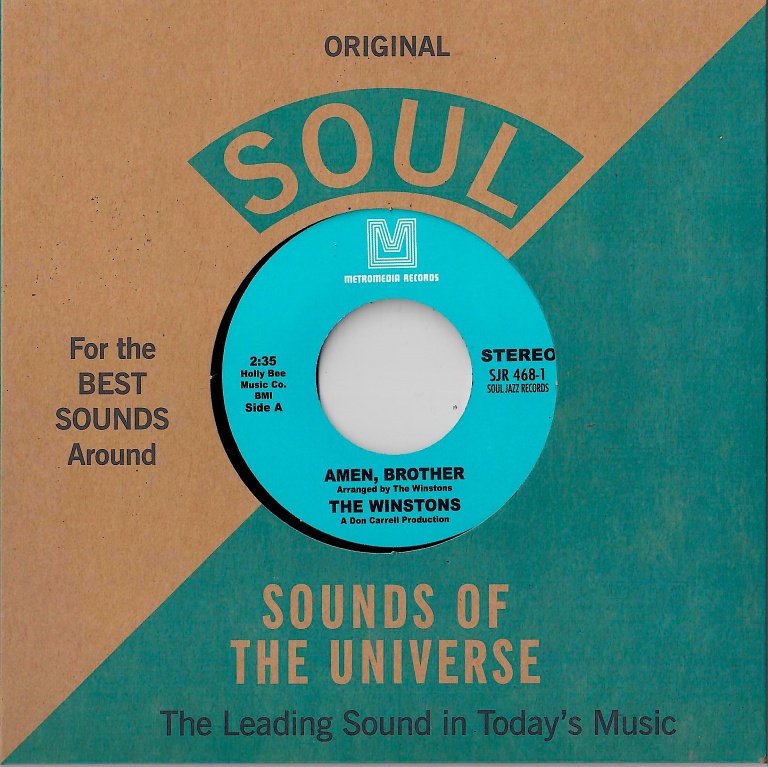Dive Into Making Music
Sounds of the Ocean Universe
Explore the latest creations from the global Ocean community.
yomama3578467875978
us - an hour ago
Jam Session
9 ▶️
Less
London,UK - 3 hours ago
TRAPTAP RETRO X TRAP
8 ▶️
Less
London,UK - 4 hours ago
TRAPTAP PACK
8 ▶️
MAtgw
Poland - 5 hours ago
Untitled Project
13 ▶️
U5
USA, Florida - 6 hours ago
breakout 2.5
17 ▶️
U5
USA, Florida - 6 hours ago
breakout 2
12 ▶️
U5
USA, Florida - 7 hours ago
breakout 1.5
9 ▶️
Subswitch15
Girltown - 7 hours ago
miam44
United States - 8 hours ago
Jam Session
8 ▶️
🎓 Ocean Education Platform
Ocean Education Platform supercharges music education with built in lesson plans, e-learning features and full sound library access.
Ocean Education provides your school or music programme with a private instance of Ocean and extra lesson plan content so you can deliver modern, engaging music lessons to your students.
All Packs

Arabic Drums
A collection of Arabic Percussion sounds

808
The 808 is the GOAT drum machine. Originally released in 1980, it was marketed as a studio tool as a quicker & cheaper alternative to recording acoustic drums. It's heavy bass drum and crispy snares went on to shape Hip-Hop.

Synths
A collection of synthesizer sounds

Breakbeats
A collection of classic breakbeats.

Clip Sound & Music
(Around The) House Music is a collection of beats, loops and ambiences recorded at home during the early 2021 lockdown in the UK. All sounds recorded by the young musicians of CLIP.

Techno
Techno is a cornerstone genre of electronic music. With pulsating beats and hypnotic synths, creating an atmosphere the listener can get lost in is the key.

Ambience
A collection of beatless samples that can be used to create atmosphere for background music in films, documentaries and podcasts

Aswat al Raseef
A collection of sounds recorded in Amman, Jordan as part of the Aswat al Raseef programme at 7Hills skatepark.

Amen Sliced
The classic Amen break sliced into single samples

Beirut x Berlin - Urban Bats
The cat/rat/bat/mosquito equilibrium plays a role in the daily life of both Beirut, Lebanon and Berlin, Germany, whether inhabitants notice it or not, and with different ratios and results in each city. Urban ecologist Julia Lorenz mapped urban bats in Berlin with the help of citizen scientists. She works at the Natural History Museum at the Citizen Science Competence Center and in her free time she offers bat watching tours and records bats in various settings of the city such as parks, forests or the city center. She gifted some of her audio findings to Beirut x Berlin's exchange residency curated by Your Mom's Agency so performers could use them in their live shows, while design and synthesis artist Elyse Tabet decided to build a drum kit based on the bats’ recordings.

Piano
The piano was invented by Bartolomeo Cristofori in the early 18th century as the "gravicembalo col piano e forte" (harpsichord with soft and loud) and has shaped all the music you like ever since

Trip Hop
Step into the enigmatic realm of Trip Hop. Originating in the early 1990s in the UK, specifically Bristol, this genre blends heavy drums with lush, ethereal textures. Echo the vibes of Massive Attack and Portishead using this pack
Dub Techno
Explore the Dub Techno with sounds inspired by pioneers like Basic Channel and Moritz Von Oswald. This genre is a fusion of deep basslines and minimalist synths freaked with delay and reverb. Dive into our sound library, experiment with these iconic sounds, and create your own atmospheric beats on our sequencer.
INTRODUCTION TO SEQUENCING
Introduction to sequencing, turning musical knowledge into production
Lesson focus & goals:
-
Understand the role of sequencing / arranging in music
-
Exploring sequencing techniques
-
Begin to use Ocean to create music
-
Begin to create sounds for your own tracks
Learning objective:
-
Introduce students to the world of sequencing and enable students to compose a piece of music effectively by putting sounds together through sequence.
What is a Sample?
A Sample is a short recording of sound taken from an existing recording and re-used in another recording.
What Is a sequencer?
A sequencer is an app or device that can record, edit or play back music. in Ocean the sequencer looks like this. Sequencing beats on Ocean is easy, just click the sequencer to form a pattern, and press play to hear it.

Patterns & Brains
Our brains are hard-wired to recognize patterns. When we hear or see a sequence, our brains can start to understand what comes next. All of our senses can spot patterns. Below are two examples of visual and audio patterns.
This is an example of human pattern art etched onto a rock from 200,000 years ago.

Fast forward 200,000 years and humans have developed ways of creating electronic music and representing drum beats as patterns. Below is an example of a very repetitive piece of music. Can you visualise the pattern of this music?
Basic Channel - Phylyps Trak II/II (1994)
When we listen to repetitive musical sequences, we hear the subtle details of all the sounds involved. How does the hi-hat change, how does the kick drum really sound? We have to mindfully listen to music and reflect on it.
Structure / Activity:
-
Students will be introduced to Ocean: how to use the platforms tools - using the sample library, effects, sequencing and arranging tab
-
In pairs you will compose a piece of music using the same laptop / iPad
-
1 person will focus on melody / harmony (piano, synth, vocal sounds), the other on beats/percussive elements i.e. drums
-
Discuss in your pair what will be your inspiration for creating the music i.e. storms, sunshine, orchestral, etc.
-
Create a minimum of 30 second loop on Ocean and develop your ideas together using a mixture of sounds, creating a clear structure
-
Showcase your work to the class, and explain your ideas for the composition
-
Students are then able to give feedback and ask questions on others’ compositions
Homework idea:
-
Experiment musical ideas at home using Ocean, try manipulating sounds with the effects available, and experiment with the ‘arrange’ tab to build up to a longer track
-
If you play an instrument, create a backing track on the website and use this to improvise over your creation with
-
Useful resource to dive into, terminology bank here
Genre Focus - Disco
Introduction to Disco Music
Lesson focus & goals:
-
Gain a deeper understanding of the origins of Disco music
-
Gain a clear understanding of how disco music is created using basic elements available on Ocean
Learning objective:
-
Demonstrate an understanding of the origins of disco music
-
Use Ocean to begin to make a track using disco music elements
-
Share your project with the teacher & one other student
Structure / Activity:
-
Following from learning about House Music, we’ll go back further than this and understand the origins of Disco
-
Teacher to showcase the basics of Disco Music, see below;
-
Typical Tempo: 120 - 130 bpm
-
Origins: Late 1960s - early 1970s, from Philadelphia & New York City (US)
-
Pioneers: ABBA, Bee Gees, Gloria Gaynor, Earth Wind & Fire, Chaka Khan
-
Characterised by: four-on-the-floor beats, repetitive lyrics, syncopated repetitive bass line. It also often includes strings, horns, synths and guitars.
-
Influenced by: Funk, Soul
-
Influenced future genres: House, Pop, Hip Hop
-
Play some examples of classic disco tracks e.g:
ABBA - Gimme! Gimme! Gimme! (1979)
-
Get students on the platform and showcase the samples that will be needed for them to create their own:
-
Samples needed: kick, snare, hi hat, tambourine, cowbell, handclap
-
Drum machines: A LinnDrum, TR 707, TR505, or Oberhein DMX, Hi hats from Boss DR-660
-
Now that you have the basics of house music, use the concepts to create your own track using inspiration from the ABBA and Bee Gees track.
-
Your track must be at least 1 minute long
-
Once you have created your track, collaborate with one other student and build on your idea. Get creative with your project
-
Share your project with other students and the teacher for feedback and suggestions
Homework idea:
-
Continue to work on your disco music project at home, explore other ideas through developing a further understanding to the genre
-
Listen to some classic disco tracks on YouTube HERE
Genre Focus - House
Introduction to House music
Lesson focus & goals:
-
Gain a deeper understanding of the origins of House music
-
Gain a clear understanding of how house music is created using basic elements available on Ocean
Learning objective:
-
Demonstrate an understanding of the origins of house music
-
Use Ocean to begin to make a track using house music elements
-
Share your project with the teacher & one other student
Structure / Activity:
-
Now that you have understood some fundamentals of music making on Ocean we will begin to use these to focus on different genres
-
Teacher to showcase the basics of House Music, see below;
-
Typical Tempo: 120 - 130 bpm
-
Cultural Origins: Early 1980s, Chicago & New York, United States predominantly by black and LGBTQ+ audiences
-
Pioneers: Frankie Knuckles & Ron Hardy
-
Characterised by: Uptempo, consistent heavy kick drum on four beats per bar (“four to the flour beat”), a clap on beat 2 & 4, uplifting, powerful vocals & melodic synth hooks.
-
Influenced by: Disco, Jazz, Latin Soul
-
Influenced future genres: Footwork, Acid House, Deep House, Techno, UK Garage and many more.
-
Play some examples of classic house tracks e.g. Frankie Knuckles - Your LoveRon Hardy - Sensation
-
Get students on the platform and showcase the samples that will be needed for them to create their own:
-
Samples needed: Kick drum, snare, 3x toms, rim shot, hand clap, open & closed hi hat, ride, crash + adding shuffle / melodic pattern to the production
-
Drum Machines: 707, 808 and 909 are the core drum machines that gave house music its particular sound.
-
Now that you have the basics of house music, use the concepts to create your own track, your track must be at least 30 seconds long and use musical techniques like layering when sequencing out your beat
-
Once you have created your track, collaborate with one other student and build on your idea. Get creative with your project
-
Share your project with other students and the teacher for feedback and suggestions
Homework idea:
-
Continue to work on your house music project at home, explore other ideas through developing a further understanding to the genre
Listen to some classic house tracks on YouTube here